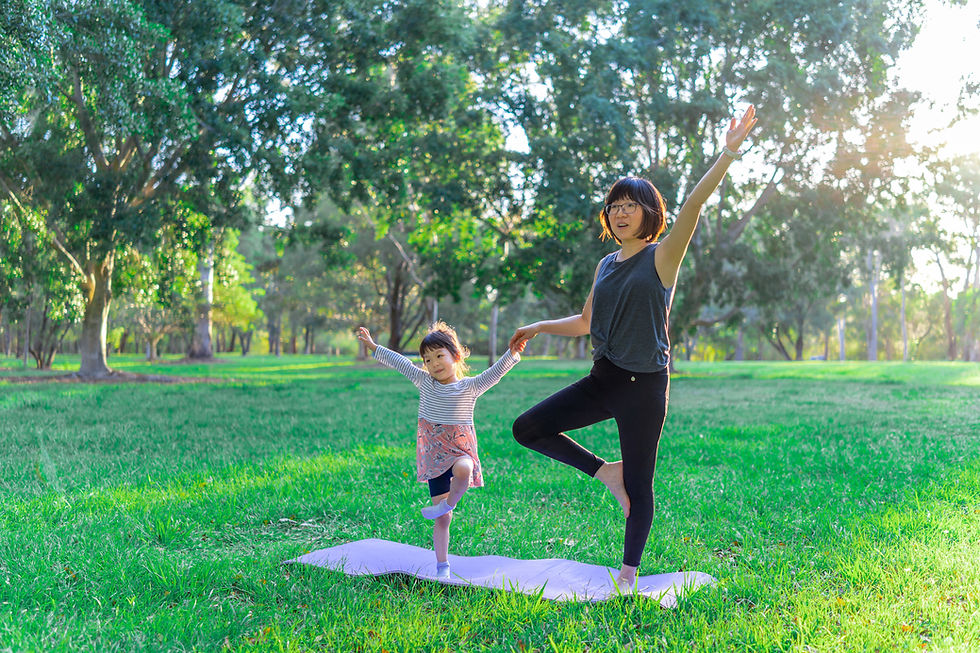- Rafael Claveau
- Feb 24
- 3 min read

Put on your sneakers and enjoy the benefits of walking When we talk about engaging in physical activity and staying active, we often associate this, either to a relatively intense effort (lifting dumbbells, playing tennis, running...), or to an activity that will require special equipment or facilities (gym, racket, skating rink...).
However, in order to take advantage of the benefits of physical activity, it is often enough to go back to basics, to simplicity and to appeal to our primary capacities. Walking is therefore an ideal activity, because it is suitable for anyone who is able to walk, does not require a great basic physical condition and can be practiced everywhere, not matter the time of season.
"I'm not used to walking and don't know where to start": Sometimes it is enough to simply start picking up your bread or vegetables walking to the grocery store instead of taking your car, walking the stairs of your building instead of taking the elevator, or simply going for a walk around your home.
At the beginning, depending on your physical condition, it is advisable to start with short distances, 1 to 2 km or duration of 10 to 20 minutes, at your own pace,maintaining the ability to hold a conversation while walking, without being out of breath.
After several walks, you can gradually extend your distances and your activity time.
I have the example of my dad who started walking regularly two years ago in beginning with distances of 3 to 4 km and who two years later has just traveled 31 km in a little less than 7 hours, he has just turned 70. So it's never too late to get started and improve gradually.
“When to walk during the day? » There isn't really a specific time to walk, it could be in the morning, after breakfast to get your body going, lubricate your joints and get oxygen to start your day on the right foot, after a long day at work to relax and reset your mind and body...
Enjoying a walk after a meal also helps digestion and regulate your blood sugar level.
In the end, the most important thing is to find your ideal moment, the one that suits you best during the day, the main thing being able to walk between 15 and 30 minutes each day, if possible.

“What are the benefits of walking? » Regular walking allows you to burn calories, estimated on average between 100 and 150 calories for a 30-minute walk at a “normal” pace of 5 km/hour.
That corresponds to at least 700 calories per week, walking 30 minutes per day at a moderate pace.
But the physical benefits of walking are not limited to burning calories, indeed walking also allows to :
- reduce the risk of cardiovascular disease
- strengthen bone capacity (thereby limiting osteoporosis)
- fill up with vitamin D, by exposing ourselves to the sun (or at least to light)
- lower blood pressure
- improve respiratory function and cardiac capacity
- better control your ideal weight and fat level
Beyond the physical aspect, there is also the psychological aspect that comes into play. Indeed, spending some time outdoors, enjoying nature and being in the open air allows us to reduce stress, anxiety, clear your mind and disconnect from our devices electronics.
“Do I need any special equipment? » The advantage of walking is that it does not require any special equipment, except a good pair of shoes, for people with joint problems and/or back, a pair of shoes with good cushioning and arch support can prove to be more comfortable too (do not hesitate to ask for advice in your sports store prefer).
Optionally, it is also possible to bring a pedometer which will calculate your number of steps and will give you an estimate of calories burned. This may prove useful to track your progress and development.
Finally, I would advise people with heart problems to opt for a heart rate monitor watch, to monitor physical activity and heart rate.
Finally, and even if you go for short walks, it is important to take a bottle of water with you, even a small snack (fruit, cereal bar, oil seeds...) in order to stay hydrated at all times and to maintain a good level of energy.












